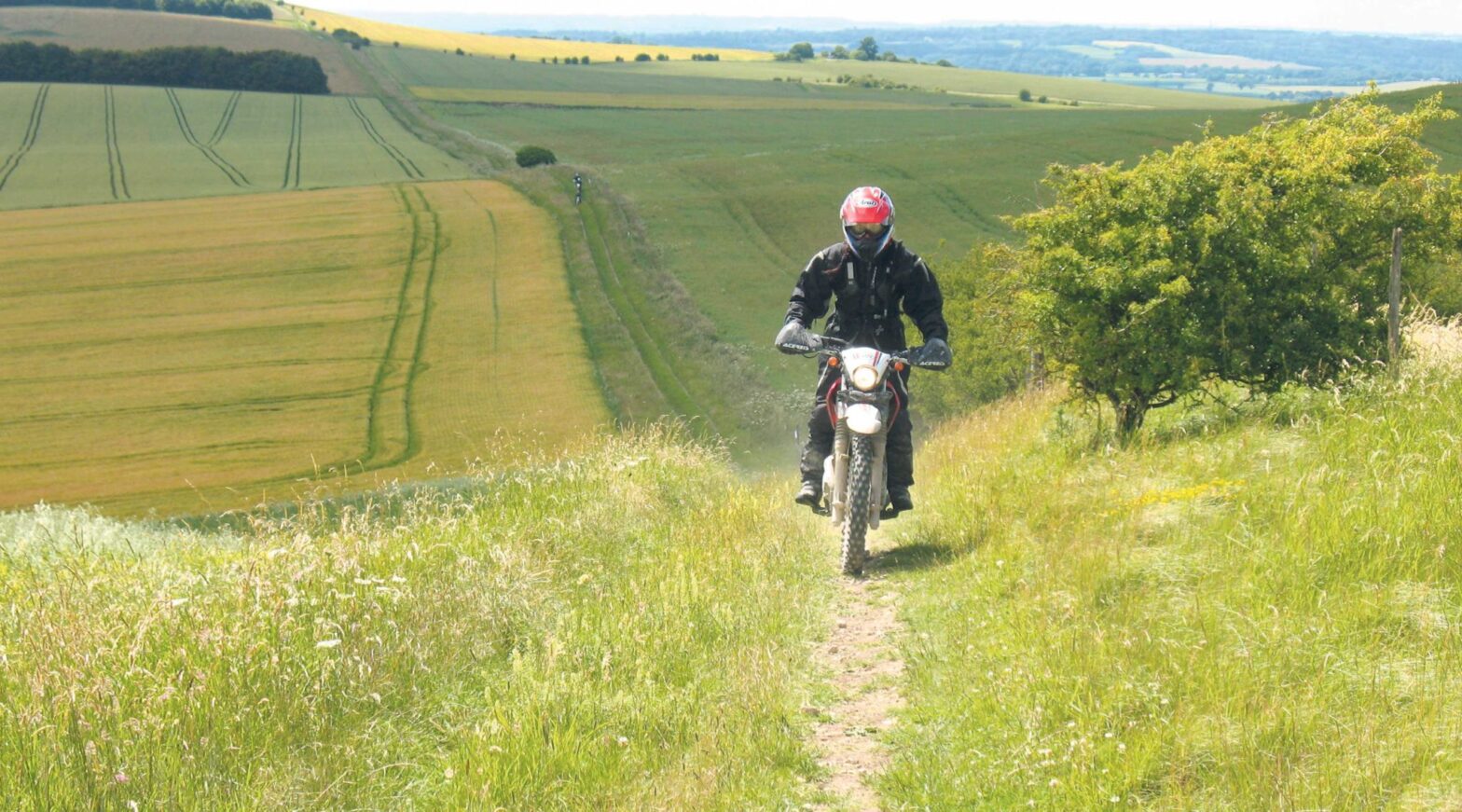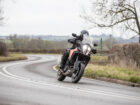How to legally ride off-road in the UK
With the popularity of adventure bikes showing no sign of stopping, and lighter weight options appearing on the market in greater numbers, off-roading has never been so popular. But the rules and regulations for legal off-roading in the UK can be a minefield at the best of times, so here’s our expert guide on how to have fun off-road and stay on the right side of the law.
What is green laning?
For the most part, when we talk about riding off-road in the UK we’re referring to something known as ‘green laning’. Green laning is driving/riding down roads known as green lanes. Unlike in other countries, where you’re free to explore at will off-road, the UK’s off-road motorcycling rules are quite restrictive. In short it’s not permitted in the UK unless you’re on private land, so the majority of ‘off-roading’ in the UK takes place on green lanes. Legally though, what we know as off-roading, isn’t actually off-road at all.
Green lanes form part of the UK highway network, so that means when you’re riding down a green lane it’s legally no different than riding down a metalled road. That means your bike needs to be fully road legal, as well as have insurance, MOT (if required), tax etc. Motocross bikes, which aren’t road legal and hence don’t have numberplates (among other items), cannot be ridden down green lanes.

Where can you ride?
There are different categories for green lanes but nearly all fall into the category of byways. To make things more complicated, there are two types of byways: restricted byways and byways open to all traffic (BOAT). Restricted byways are exactly that – restricted access to powered vehicles. This makes them bridleways to all intents, so you can’t ride a motorcycle down one. BOATs also do exactly what they say on the tin and are therefore open to all vehicles, which means you can ride your motorcycle down one.
You may also hear or read the terms RUPP (Road Used as Public Path) and UCR (Unclassified County Road) however both terms are obsolete. RUPPs were all turned into restricted byways as part of the Countryside and Rights of Way Act 2000 (which came into effect in 2006) while UCRs have officially been out of use since the early 1970s. What UCRs still remain make up a tiny percentage of the green lane network and UCR status does not confer vehicular access rights, so, for the most part, they’re best not worried about.
Thankfully the two type main types have different symbols on maps, making them easy to tell apart; restricted byways appear on Ordnance Survey maps as a pink dotted and dashed line while BOATS appear as small pink plusses along a dotted line. Easy right? Not quite so fast.
Even though a green lane may be a BOAT, it may not currently be legal to ride a motorcycle down one. That’s because councils can place Traffic Restriction Orders (TROs) on BOATs to prevent powered vehicles using them. It doesn’t affect their highway status, so the change isn’t reflected on OS maps. This means that planning a route using BOATs from a paper map could end with grumpy riding partners when the entrance to every lane has big ‘no vehicle’ signs.
To complicate matters further, there are also seasonal TROs (often in winter months to prevent damage) and vehicle specific TROs (4x4s may be banned but not bikes for instance) again to prevent damage. If this all sounds complex that’s because it is. By far the easiest way to keep abreast of the changes and discover legal routes in your local area is to join the Trail Riders Fellowship. As well as their up to date online Green Road Map (which lists TROs) the group also fights for access, while local groups organise rides. It’s £52 very well spent.
What should you ride?
The green lane network in the UK is incredibly varied. Some green lanes are little more than tarmac roads with some grass up the middle that wouldn’t trouble the most road-focused adventure bikes, while others are strewn with boulders and have rocky steps that would test the skills of many enduro riders. As such, there’s no ‘perfect’ green lane machine. Also the reality is that accessing many green lanes in the UK requires time spent on the road, so a bike that can balance road and off-road is what’s best.
Strictly speaking any road legal motorcycle is free to ride down a green lane, so you could take a Ducati Panigale down one if you wanted, but we wouldn’t recommend it. As with most things in life, if you’re new to riding off-road then starting small and working your way up is the best way to go about it. Bikes such as the Honda CRF300L and the Royal Enfield Himalayan make ideal first machines for tackling the rough stuff. Whatever bike you ride will benefit from having dedicated dual purpose or off-road focused tyres – especially outside of dry summer spells.

Where can you learn?
If you’re coming from the world of adventure bikes, most major manufacturers have a UK-based adventure school including BMW, Harley-Davidson, Honda, KTM and Triumph. All these schools will allow you to learn the basics in a safe, traffic free environment. Each one has its plusses and minuses, but on a basic level it makes most sense to stick with whoever makes your bike as it will be most easily transferred to your own machine. There are also plenty of independent training schools that focus on trail riding on enduro bikes, such as DesertRose, as well as companies that organise events for adventure bikes with less structured training, such as RallyMoto.
Staying safe
Wherever possible, it’s best never to ride alone. Some green lanes may not be visited for days or even
weeks at a time, so if anything bad was to happen help might not always been quick to arrive. Even if something less serious occurs – you get your bike stuck in mud or it breaks down – both are much more easily solved with a friend or two to help you out.
If you are going to ride on your own, we’d recommend something like a SPOT Tracker. Small and easy to use, it allows people to track you even when phone signal isn’t available and if things go really pete tong, you can press the SOS button and call for help.
Extra info/useful contacts
How to ride your motorbike off road – MCN.
The home of trail and adventure riding in the UK
The byway map – online map of dirt routes accessible on your bike
Triumph Adventure Riding Experience



